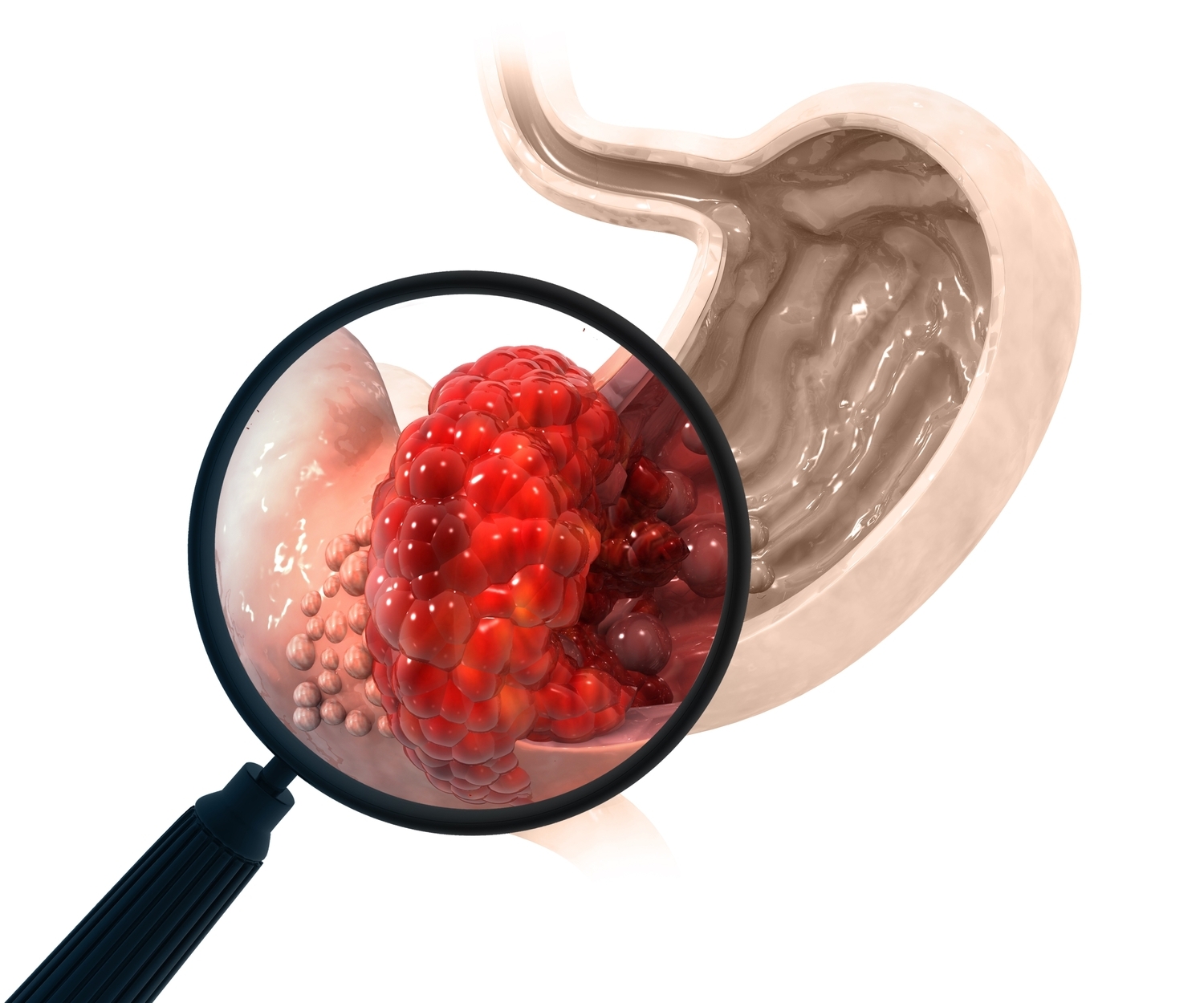Ripretinib and Ayvakit: Advancing the Treatment of GIST Stomach Cancer
Introduction
Gastrointestinal stromal tumors (GIST) are a rare type of cancer that occurs in the digestive system, most commonly in the stomach or small intestine. These tumors arise from specialized cells in the gastrointestinal tract called interstitial cells of Cajal, which are responsible for controlling the muscles that aid digestion. GISTs are typically driven by mutations in specific genes, such as KIT or PDGFRA, making targeted therapies a crucial part of their treatment.

Over the past decade, major advancements in the treatment of GIST have transformed the prognosis for patients with this type of cancer. Two such breakthrough therapies are Ripretinib and Ayvakit (avapritinib), both of which have shown significant potential in targeting mutations that drive GIST growth. These targeted therapies offer hope to patients who may not respond to standard treatments like imatinib, the first-line therapy for GIST.
This article will explore the roles of Ripretinib and Ayvakit in the treatment of GIST, comparing their efficacy, safety, and mechanisms of action.
Understanding GIST and Its Treatment Challenges
GIST tumors are often characterized by mutations in the KIT or PDGFRA genes, which lead to uncontrolled cell growth. Traditionally, the treatment of GIST has relied on tyrosine kinase inhibitors (TKIs) like imatinib (Gleevec), which targets these mutated genes. However, resistance to imatinib can develop over time, necessitating the need for alternative therapies.
Patients who have progressed on imatinib, or who harbor specific mutations that make them resistant to it, often face limited treatment options. This is where Ripretinib and Ayvakit come into play, offering second- and third-line treatment options that specifically target mutations in KIT or PDGFRA, providing patients with a much-needed alternative.
Ripretinib: A Game-Changer for GIST Treatment
Ripretinib (brand name Qinlock ), developed by Deciphera Pharmaceuticals, is a next-generation TKI designed to inhibit a wide range of KIT and PDGFRA mutations. Approved by the FDA in May 2020 for the treatment of adult patients with GIST who have previously been treated with three or more kinase inhibitors, Ripretinib is considered a fourth-line treatment option.
Mechanism of Action
Ripretinib works by inhibiting both primary and secondary mutations in the KIT and PDGFRA genes, making it effective even in cases where previous therapies have failed. What sets Ripretinib apart is its ability to stabilize the inactive form of KIT, thereby preventing the activation of the pathways that lead to tumor growth.
Efficacy
In clinical trials, particularly the INVICTUS study, Ripretinib demonstrated a significant improvement in progression-free survival (PFS) compared to placebo. Patients who received Ripretinib had a median PFS of 6.3 months, compared to just 1 month in the placebo group. Additionally, the overall survival (OS) rate was 15.1 months for those on Ripretinib, a marked improvement for patients with heavily pre-treated GIST.
Side Effects
Common side effects of Ripretinib include alopecia, fatigue, nausea, and muscle pain. While generally well-tolerated, more severe side effects, such as skin reactions and hypertension, have been observed in some patients.
Ayvakit: A Precision Therapy for Specific GIST Mutations
Ayvakit (avapritinib), developed by Blueprint Medicines, was approved by the FDA in January 2020 as a treatment for adults with GIST harboring a PDGFRA exon 18 mutation, including the D842V mutation, which is known to be resistant to imatinib and other TKIs. This makes Ayvakit a more targeted approach, specifically designed for patients whose tumors carry this difficult-to-treat mutation.
Mechanism of Action
Ayvakit is a selective inhibitor of mutated PDGFRA and KIT proteins, effectively shutting down the signaling pathways that promote cancer cell growth. Its specificity for the D842V mutation makes it particularly effective for patients with this genetic alteration.
Efficacy
In clinical trials, such as the NAVIGATOR study, Ayvakit demonstrated remarkable efficacy in patients with the PDGFRA exon 18 mutation. The overall response rate (ORR) for patients with the D842V mutation was 84%, with some patients experiencing complete tumor shrinkage. Median PFS and OS rates were not reached, indicating that many patients were still benefiting from the treatment at the time of data cutoff.
Side Effects
The most common side effects of Ayvakit include edema, fatigue, nausea, and cognitive effects such as memory impairment and confusion. In rare cases, serious adverse events such as intracranial bleeding have been reported, which led to specific warnings for healthcare providers to monitor for neurological symptoms during treatment.
Comparing Ripretinib and Ayvakit for GIST Treatment
Both Ripretinib and Ayvakit provide essential options for GIST patients, especially those who have become resistant to first-line treatments like imatinib. However, their use is tailored to specific patient populations based on the type of mutations present and prior treatment history. The table below summarizes the key differences between the two drugs:
| Feature | Ripretinib (Qinlock) | Ayvakit (Avapritinib) |
|---|---|---|
| FDA Approval | Fourth-line treatment for GIST after prior TKIs | First-line treatment for GIST with PDGFRA exon 18 mutations |
| Mechanism of Action | Broad-spectrum KIT and PDGFRA inhibitor | Selective inhibitor of PDGFRA and KIT with exon 18 mutations |
| Target Population | Patients with GIST resistant to at least 3 prior treatments | Patients with PDGFRA exon 18 mutations, including D842V |
| Efficacy | PFS: 6.3 months, OS: 15.1 months | ORR: 84% in D842V mutation cases |
| Common Side Effects | Fatigue, alopecia, muscle pain, skin reactions | Edema, fatigue, cognitive impairment, nausea |
| Severe Side Effects | Hypertension, skin toxicities | Intracranial bleeding, memory loss |
| Dosing | 150 mg once daily | 300 mg once daily |
Ripretinib and Ayvakit represent significant advancements in the treatment of GIST stomach cancer, offering hope to patients who have either exhausted previous treatment options or who have specific mutations that are resistant to conventional therapies. While both drugs are highly effective, their usage is tailored to specific patient populations based on mutation types and prior treatment history.
For patients with advanced GIST who have developed resistance to earlier therapies, Ripretinib offers a new lease on life by targeting a wide range of mutations. Ayvakit, on the other hand, provides a precision medicine approach, delivering highly effective results for those with the PDGFRA exon 18 mutation. As research and clinical trials continue, these drugs may pave the way for even more targeted and effective treatments for GIST and other rare cancers.
References
- Deciphera Pharmaceuticals. (2020). “Ripretinib (Qinlock) for GIST.” https://www.deciphera.com
- Blueprint Medicines. (2020). “Ayvakit (Avapritinib) for GIST.” https://www.blueprintmedicines.com
- ClinicalTrials.gov. “INVICTUS Study for Ripretinib in GIST.” https://clinicaltrials.gov
- U.S. Food and Drug Administration. “FDA Approves Ripretinib for Advanced GIST.” https://www.fda.gov


